

Exploring our past to sort out myth from reality
Share this Page on
Facebook or Twitter

These are the voyages of the TimeShip Anachron.
Our Mission: To boldly explore the past, dispelling
mythinformation and mythconceptions
of American History along the way.
 Visit us on Facebook
Visit us on Facebook
Meet MythAmerica Series

Pt 1 Pt 2 Pt 3 Pt 4 Pt 5 Pt 6 Pt 7 Pt 8 Pt 9 Pt 10 Pt 11
The Not-So-Gay Nineties, Part 2
Thine Alabaster Cities
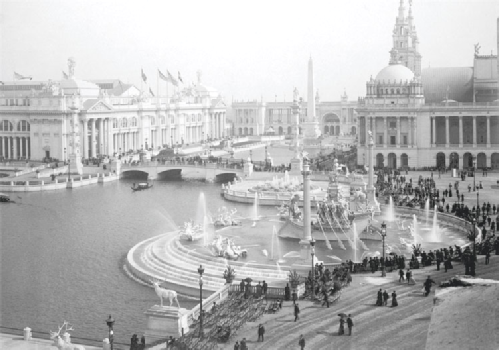
Can you guess the location of the city above, with its gleaming, massive, classical “buildings for the ages”? Is it somewhere in Italy or France? Or maybe Austria?
Let me give you a hint.
Remember the words of the last stanza of America the Beautiful?
Oh, beautiful, for Patriot dream that sees beyond the years.
Thine alabaster cities gleam, undimmed by human tears …
Alabaster is a valuable substance (most typically white) often used for marble-
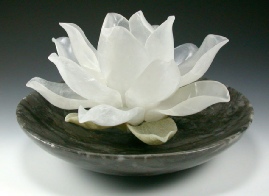
So the word alabaster is sometimes used to describe something that is pure white like finest white alabaster. An alabaster city would be one that looks just like that picture of a city above … pristine and white, glowing in the sunshine.
In fact, indeed the alabaster city in the picture is the very one that inspired Katherine Lee Bates, author of America the Beautiful, to write the words in that stanza! She had ridden on a train past this alabaster city on the trip out to the American west during which she wrote the song. She had passed “amber waves of grain,” and “purple mountains” under spacious skies. But before that, she passed by the alabaster city, and later explained that it was what inspired her to speak of alabaster cities for America that were tearless.
So if you’d like to make a pilgrimage to that Alabaster City today, what part of the USA would you travel to?
Don’t bother looking. It doesn’t exist any longer. In fact, it wasn’t built “for the ages.” It was built to last … six months!
The picture is of a section of the 1893 Columbian Exposition/World’s Fair in Chicago in 1893, the crowning jewel of the Gay 90s in American history.
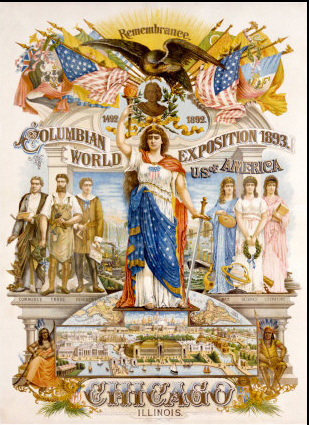
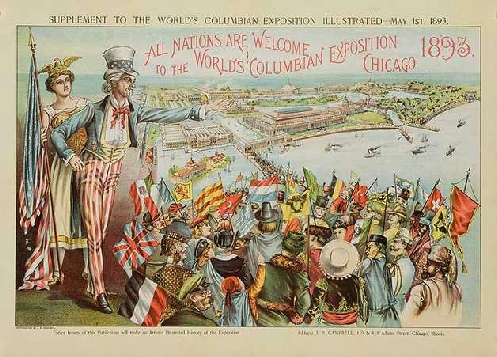
The grounds of the Fair were dubbed “The White City” by publicity at the time because indeed all the architecture looked to be made of white marble. As did the vast number of statues scattered throughout the grounds, such as this massive installation that represented the “Ship of State.”
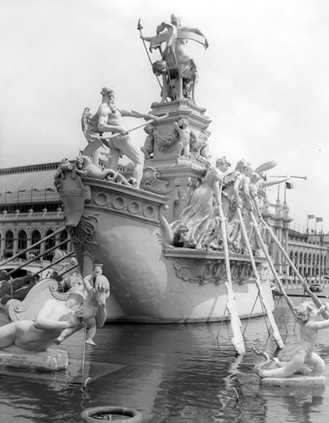
Have a look at a few more scenes of this fabulous city.
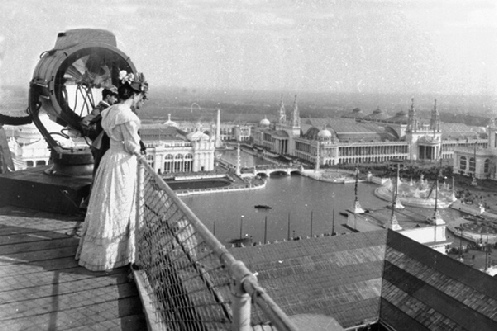
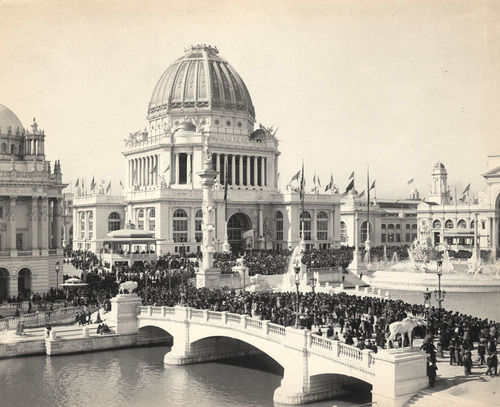
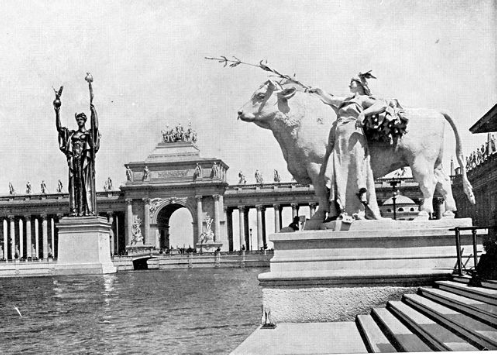
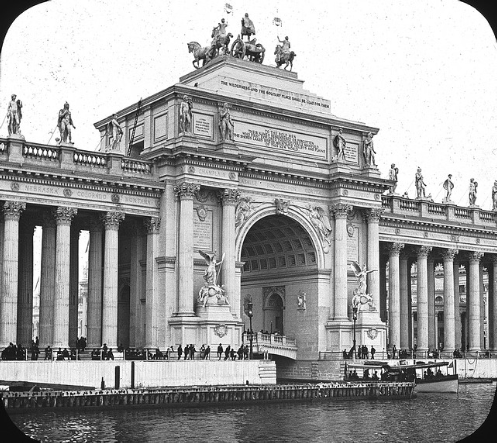
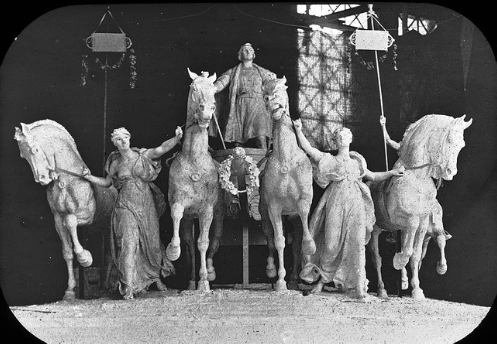
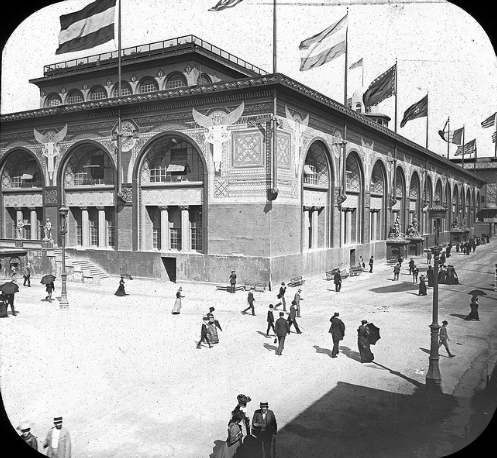
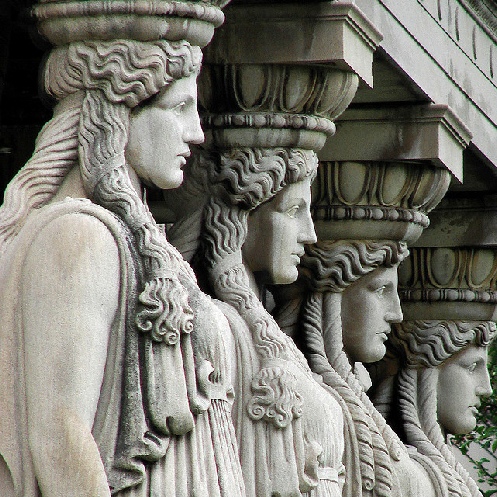
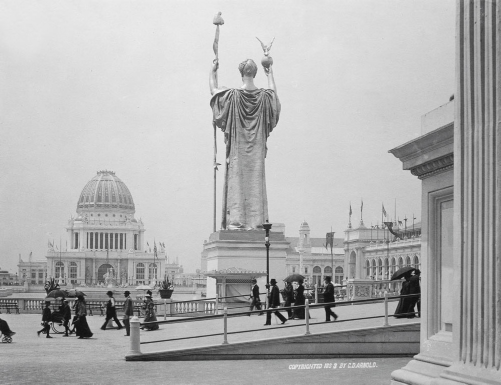
But the reality was that almost all the architecture and statuary you see above wasn’t made of marble, or any other costly material. Nor was it substantial or lasting.
Almost all of it was made of cheap wood and/or iron framework covered with a material—almost like a fancy version of papier-
After drying out, staff could be carved and sawed and painted or coated to look like a variety of materials. In the case of the White City it posed very effectively as marble when painted white. In fact, the same material was used in in a similar way in the early years of Hollywood to make “sets” of splendiferous architecture and statuary for historical movie scenes, such as this one of ancient Babylon featured in the 1916 D.W. Griffith 3.5 hour extravaganza, Intolerance.
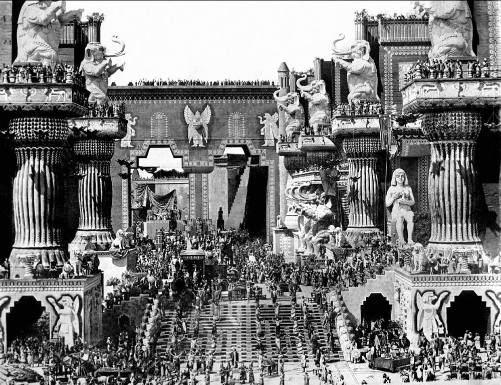
Yes, staff looked like marble to the untrained eye. But it wasn’t intended to last for millennia like marble. The Fair ran from May to October 1893. So the 200+ magnificent buildings that made up the White City were finished in time for Opening Day May 1, bedazzled people for six months, and then were retired on October 31.
The White City soon became a ghost town, and eight months later, many of the splendiferous buildings were destroyed in a fire that swept the empty fairgrounds. And a hundred years later, you can drive by the location and have no clue it existed. The area is now Chicago’s Jackson Park. The only obvious reminder of the glory days of the spot is a statue.
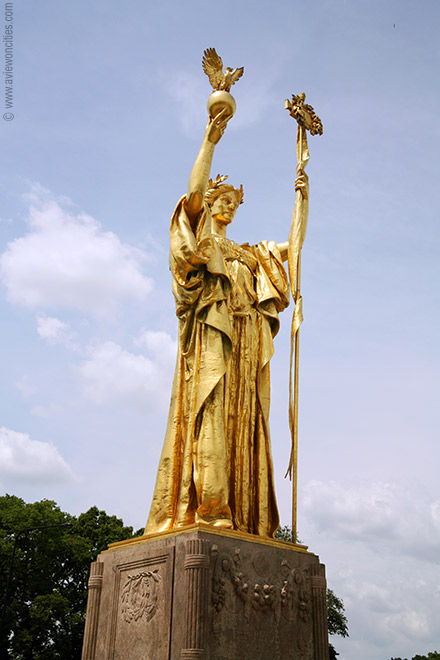
The Statue of the Republic is a 24-
The original statue stood in front of the Court of Honor at the World's Columbian Exposition. However, in 1896, the original 65-
The statue is widely known in Chicago by the colloquial name of the "Golden Lady." [Wiki]
You might say that the 1893 Columbian Exposition was a perfect metaphor for its time in history, The Gay 90s: A façade...on an illusion.
Let’s take a closer look at the nature of that illusion.